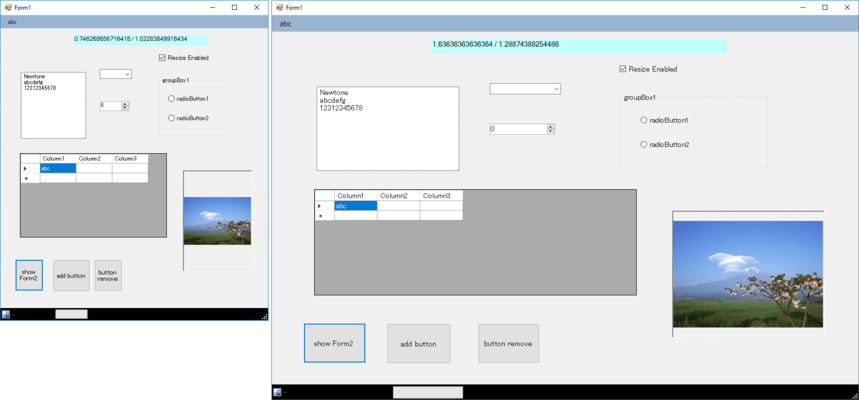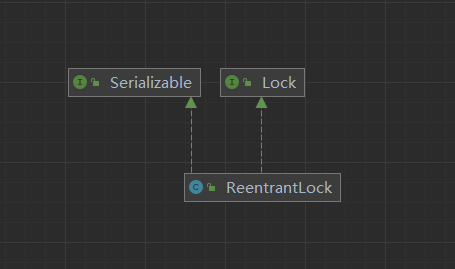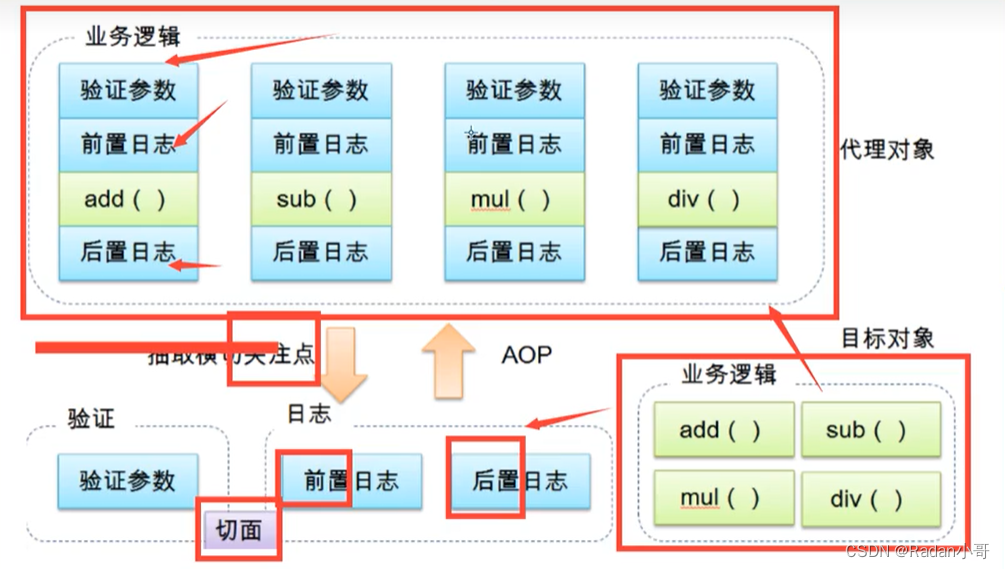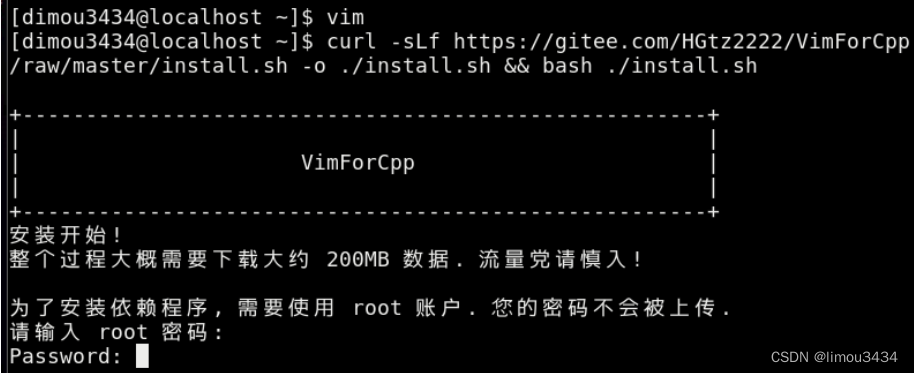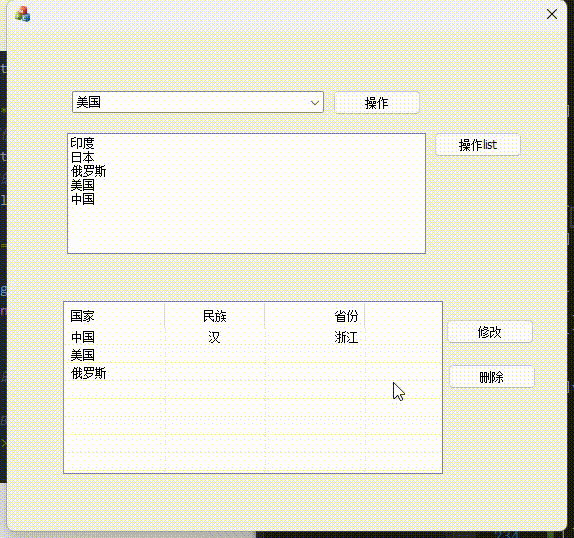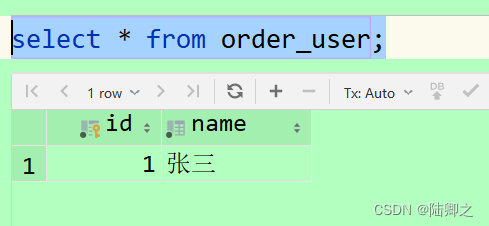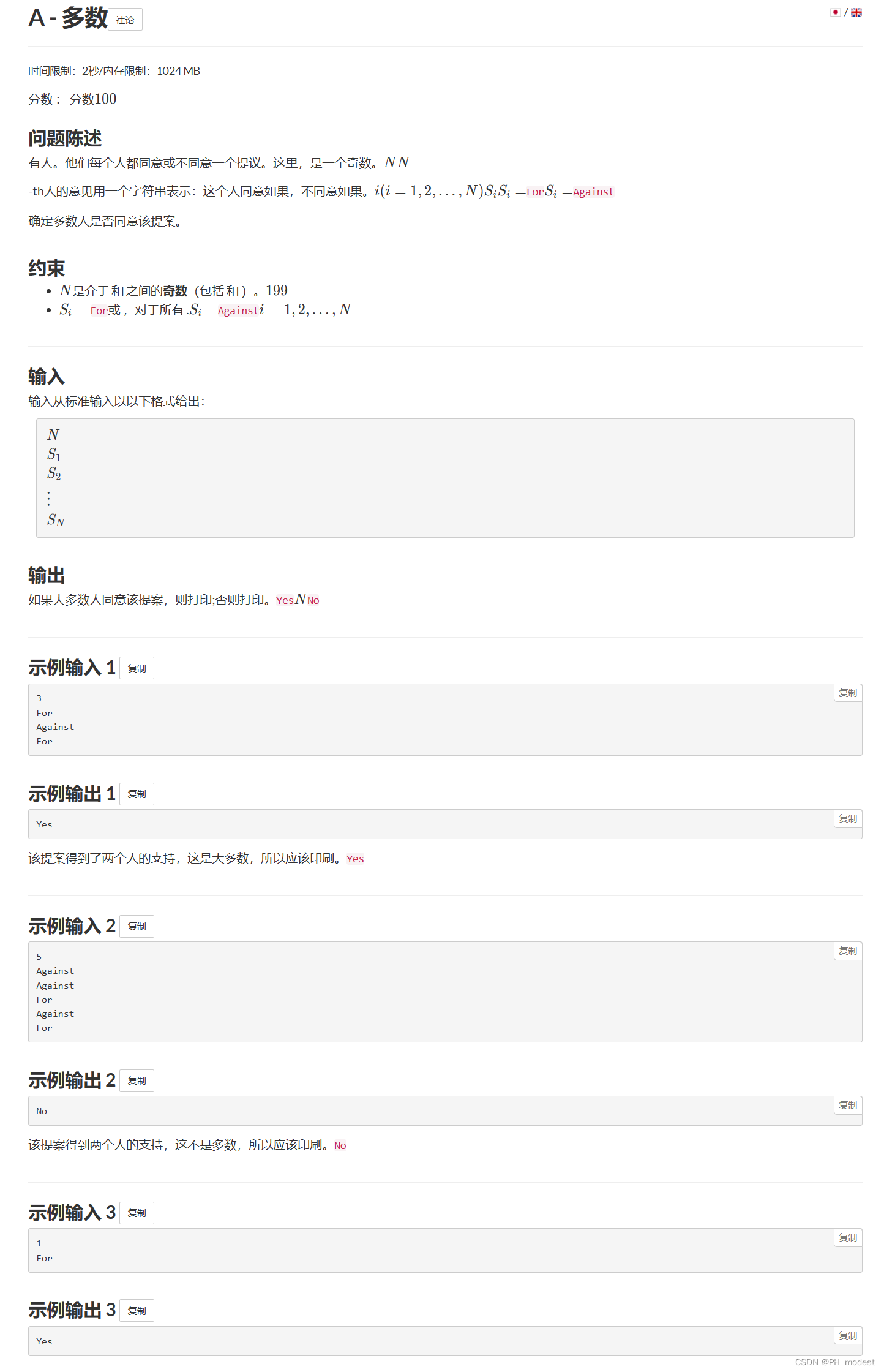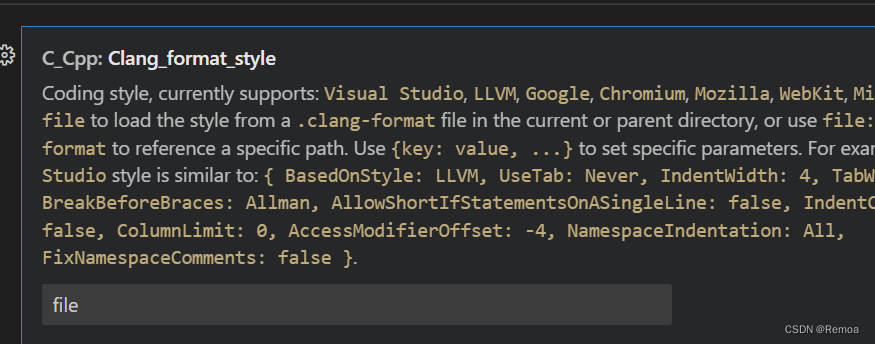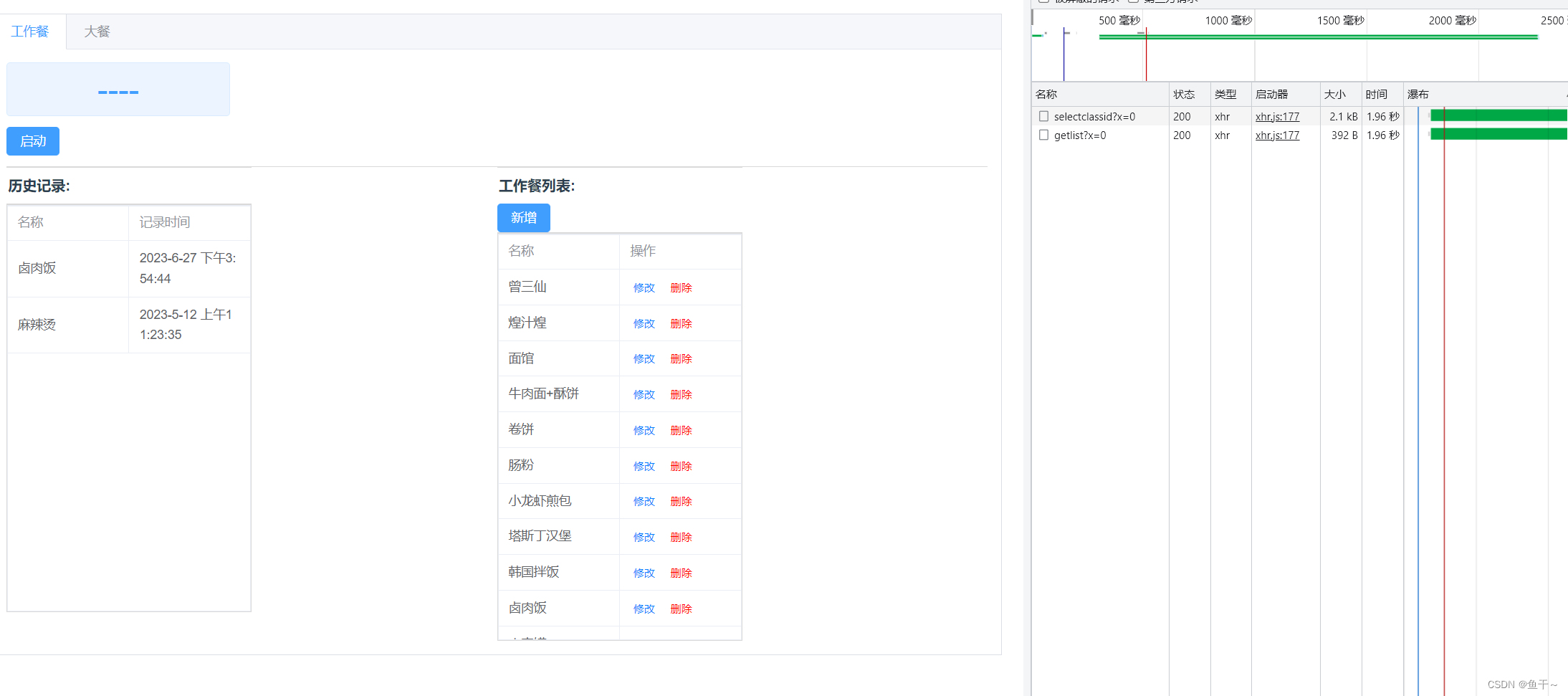IO流(几种常见的流)
- IO流
- 概述
- IO的分类
- 顶级父类
- 字节流、字符流
- 字节输出流OutputStream
- 字节输入流InputStream
- FileOutputStream类
- FileOutputStream**写出字节数据**
- FileInputStream类
- FileInputStream读取字节数据
- 复制图片
- 字符流
- 字符输入流Reader
- 字符输出流Writer
- FileReader类
- FileReader读取字符数据
- FileWriter类
- 写出字符
- 关闭和刷新
- 写出其他数据
- 缓冲
- 概述
- 字节缓冲流
- 字节输入流
- **构造方法**:
- 使用步骤
- 测试代码
- 字节输出流
- **构造函数**:
- 使用步骤
- **测试代码**
- 字符缓冲流
- 构造方法
- 字符缓冲输出流
- 字符缓冲输入流
- 序列化流
- 概述
- ObjectOutputStream类
- 序列化操作
- 开始序列化
- ObjectInputStream类
- 反序列化操作失败原因
- 打印流
- 概述
- PrintStream类构造方法
- 改变打印流向
- 转换流
- 字符编码和字符集
- InputStreamReader类
- **构造方法**
- 使用步骤
- 测试代码
- 指定编码读取
- OutputStreamWriter类
- 构造方法
- 参数
- 使用步骤
- 测试代码
- 指定编码写出
IO流
概述
我们把数据的传输,可以看做是一种数据的流动,按照流动的方向,以内存为基准,分为输入input和输出output ,即流向内存是输入流,流出内存的输出流。
Java中I/O操作主要是指使用 java.io 包下的内容,进行输入、输出操作。输入也叫做读取数据,输出也叫做作写出数据。
IO的分类
根据数据的流向分为:输入流和输出流。
输入流 :把数据从 其他设备上读取到内存中的流。
输出流 :把数据从 内存 中写出到 其他设备上的流。
根据数据的类型分为:字节流和字符流。
字节流 :以字节为单位,读写数据的流。
字符流 :以字符为单位,读写数据的流。
顶级父类
![[外链图片转存失败,源站可能有防盗链机制,建议将图片保存下来直接上传(img-tLadXOW6-1688009333415)(E:\myapp\typora\笔记文件夹\java第二阶段\IO流图片\顶级父类.png)]](https://img-blog.csdnimg.cn/aae5073d6fab4f98996ab8e923935a48.png)
字节流、字符流
一切文件数据(文本、图片、视频等)在存储时,都是以二进制数字的形式保存,都一个一个的字节,那么
传输时一样如此。所以,字节流可以传输任意文件数据。在操作流的时候,要时刻明确,无论使用
什么样的流对象,底 层传输的始终为二进制数据。
字节输出流OutputStream
java.io.OutputStream 抽象类是表示字节输出流的所有类的超类,将指定的字节信息写出到目的地。它
定义了字节输出流的基本共性功能方法。
public void close() :关闭此输出流并释放与此流相关联的任何系统资源。
public void flush() :刷新此输出流并强制任何缓冲的输出字节被写出。
public void write(byte[] b) :将 b.length字节从指定的字节数组写入此输出流。
public void write(byte[] b, int off, int len) :从指定的字节数组写入 len字节,从偏移量 off开始输 出到
此输出流。
public abstract void write(int b) :将指定的字节输出流。
字节输入流InputStream
java.io.InputStream 抽象类是表示字节输入流的所有类的超类,可以读取字节信息到内存中。它定义了字节输入流的基本共性功能方法。
public void close() :关闭此输入流并释放与此流相关联的任何系统资源。
public abstract int read() :从输入流读取数据的下一个字节。
public int read(byte[] b) :从输入流中读取一些字节数,并将它们存储到字节数组b中。
FileOutputStream类
OutputStream 有很多子类,java.io.FileOutputStream 类是文件输出流,用于将数据写出到文件。
当你创建一个流对象时,必须传入一个文件路径。该路径下,如果没有这个文件,会创建该文件。如果
有这个文 件,会清空这个文件的数据。
public class FileOutputStreamConstructor {
public static void main(String[] args) throws FileNotFoundException {
// 使用File对象创建流对象
File file = new File("a.txt");
FileOutputStream fos1 = new FileOutputStream(file);
// 使用文件名称创建流对象
FileOutputStream fos2 = new FileOutputStream("b.txt");
}
}
FileOutputStream写出字节数据
1.写出字节:write(int b) 方法,每次可以写出一个字节数据
public class FOSWrite {
public static void main(String[] args) throws IOException {
// 使用文件名称创建流对象
FileOutputStream fos = new FileOutputStream("D:\\a.txt");
// 写出数据
fos.write(97); // 写出第1个字节
fos.write(98); // 写出第2个字节
fos.write(99); // 写出第3个字节
// 关闭资源
fos.close();
}
}
2.写出字节数组: write(byte[] b) ,每次可以写出数组中的数据
public class FOSWrite {
public static void main(String[] args) throws IOException {
// 使用文件名称创建流对象
FileOutputStream fos = new FileOutputStream("D:\\a.txt");
// 字符串转换为字节数组
byte[] b = "Good Good Study".getBytes();
// 写出字节数组数据
fos.write(b);
// 关闭资源
fos.close();
}
}
3.写出指定长度字节数组: write(byte[] b, int off, int len) ,每次写出从off索引开始,len个字节
public class FOSWrite {
public static void main(String[] args) throws IOException {
// 使用文件名称创建流对象
FileOutputStream fos = new FileOutputStream("D:\\a.txt");
// 字符串转换为字节数组
byte[] b = "day day up".getBytes();
// 写出从索引2开始,2个字节
fos.write(b,2,2);
// 关闭资源
fos.close();
}
}
FileInputStream类
java.io.FileInputStream 类是文件输入流,从文件中读取字节。
构造方法
FileInputStream(File file) : 通过打开与实际文件的连接来创建一个FileInputStream ,
该文件由文件系统中的 File对象 file命名。
FileInputStream(String name) : 通过打开与实际文件的连接来创建一个FileInputStream ,该文件由文件 系统中的路径名name命名。 当你创建一个流对象时,必须传入一个文件路径。该路径下,如果没有该文件,会抛出 FileNotFoundException 。
测试代码
public class FileInputStreamConstructor {
public static void main(String[] args) throws FileNotFoundException {
// 使用File对象创建流对象
File file = new File("a.txt");
FileInputStream fos1 = new FileInputStream(file);
// 使用文件名称创建流对象
FileInputStream fos2 = new FileInputStream("b.txt");
}
}
FileInputStream读取字节数据
1.读取字节: read 方法,每次可以读取一个字节的数据,提升为int类型,读取到文件末尾,返回 -1。
// 使用文件名称创建流对象
FileInputStream fis = new FileInputStream("D:\\a.txt");
// 读取数据,返回一个字节
int b;
// 循环读取
while ((b = fis.read())!=-1) {
System.out.println((char)b);
}
// 关闭资源
fis.close();
2.使用字节数组读取: read(byte[] b) ,每次读取b的长度个字节到数组中,返回读取到的有效字节个
数,读 取到末尾时,返回 -1 。
// 使用文件名称创建流对象.
FileInputStream fis = new FileInputStream("D:\\a.txt");//112233a
// 定义变量,作为有效个数
int len;
// 定义字节数组,作为装字节数据的容器
byte[] b = new byte[2];
// 循环读取
while ((len = fis.read(b)) != -1) {
// 每次读取后,把数组变成字符串打印
//由于最后一次读取时,可能读取没有两个,上次读取的数据没有被完全替换,所以转化0-len的范围
System.out.println(new String(b,0,len));// len 每次读取的有效字节个数
}
// 关闭资源
fis.close();
复制图片
import java.io.*;
public class Test02 {
public static void main(String[] args) throws IOException {
FileInputStream file2=new FileInputStream(new File("src/com/HQSecond/day7/homework/5.jpg"));
FileOutputStream file1=new FileOutputStream(new File("src/com/HQSecond/day7/homework/3.jpg"));
byte b[]=new byte[1024];
int len;
while((len=file2.read(b))!=-1){
file1.write(b,0,len);
}
file1.close();
file2.close();
}
}
字符流
当使用字节流读取文本文件时,可能会有一个小问题。就是遇到中文字符时,可能不会显示完整的字
符,那是因为 一个中文字符可能占用多个字节存储。所以Java提供一些字符流类,以字符为单位读写数
据,专门用于处理文本文件。
字符输入流Reader
java.io.Reader 抽象类是表示用于读取字符流的所有类的超类,可以读取字符信息到内存中。它定义了
字符输入流的基本共性功能方法。
public void close() :关闭此流并释放与此流相关联的任何系统资源。
public int read() : 从输入流读取一个字符。
public int read(char[] cbuf) : 从输入流中读取一些字符,并将它们存储到字符数组 cbuf中。
字符输出流Writer
java.io.Writer 抽象类是表示用于写出字符流的所有类的超类,将指定的字符信息写出到目的地。它定义
了字节输出流的基本共性功能方法。
void write(int c) 写入单个字符。
void write(char[] cbuf) 写入字符数组。
abstract void write(char[] cbuf, int off, int len) 写入字符数组的某一部分,off数组的开始索引,len 写的字符个数。
void write(String str) 写入字符串。
void write(String str, int off, int len) 写入字符串的某一部分,off字符串的开始索引,len写的字符个 数。
void flush() 刷新该流的缓冲。
void close() 关闭此流,但要先刷新它。
FileReader类
java.io.FileReader 类是读取字符文件的便利类。构造时使用系统默认的字符编码和默认字节缓冲区。
注意:
1.字符编码:字节与字符的对应规则。Windows系统的中文编码默认是GBK编码表。 idea中UTF-8
2.字节缓冲区:一个字节数组,用来临时存储字节数据。
构造方法:
FileReader(File file) : 创建一个新的 FileReader ,给定要读取的File对象。
FileReader(String fileName) : 创建一个新的 FileReader ,给定要读取的文件的名称。
FileReader读取字符数据
- 读取字符: read 方法,每次可以读取一个字符的数据,提升为int类型,读取到文件末尾,返回 -1,循环读取。
public class FRRead {
public static void main(String[] args) throws IOException {
// 使用文件名称创建流对象
FileReader fr = new FileReader("D:\\a.txt");//112233a
// 定义变量,保存数据
int b;
// 循环读取
while ((b = fr.read()) != -1) {
System.out.println((char) b);
}
// 关闭资源
fr.close();
}
}
2.使用字符数组读取: read(char[] cbuf) ,每次读取b的长度个字符到数组中,返回读取到的有效字符
个数, 读取到末尾时,返回 -1。
public class FRRead {
public static void main(String[] args) throws IOException {
// 使用文件名称创建流对象
FileReader fr = new FileReader("D:\\a.txt");//112233a
// 定义变量,保存有效字符个数
int len;
// 定义字符数组,作为装字符数据的容器
char[] cbuf = new char[2];
// 循环读取
while ((len = fr.read(cbuf)) != -1) {
System.out.println(new String(cbuf,0,len));
}
// 关闭资源
fr.close();
}
}
FileWriter类
java.io.FileWriter 类是写出字符到文件的便利类。构造时使用系统默认的字符编码和默认字节缓冲区。
构造方法:
FileWriter(File file) : 创建一个新的 FileWriter,给定要读取的File对象。
FileWriter(String fileName) : 创建一个新的 FileWriter,给定要读取的文件的名称。
测试代码
public class FileWriterConstructor {
public static void main(String[] args) throws IOException {
// 使用File对象创建流对象
File file = new File("a.txt");
FileWriter fw1 = new FileWriter(file);
// 使用文件名称创建流对象
FileWriter fw2 = new FileWriter("b.txt");
}
}
写出字符
write(int b) 方法,每次可以写出一个字符数据。
public class FWWrite {
public static void main(String[] args) throws IOException {
// 使用文件名称创建流对象
FileWriter fw = new FileWriter("D:\\a.txt");
// 写出数据
fw.write(97); // 写出第1个字符
fw.write('b'); // 写出第2个字符
fw.write('C'); // 写出第3个字符
fw.write(30000); // 写出第4个字符,中文编码表中30000对应一个汉字。
fw.close();//关闭流
}
}
注意:关闭资源时,与FileOutputStream不同。如果不关闭,数据只是保存到缓冲区,并未保存到文件。
关闭和刷新
因为内置缓冲区的原因,如果不关闭输出流,无法写出字符到文件中。但是关闭的流对象,是无法继续
写出数据 的。如果我们既想写出数据,又想继续使用流,就需要 flush 方法了。
flush :刷新缓冲区,流对象可以继续使用。
close :先刷新缓冲区,然后通知系统释放资源。流对象不可以再被使用了。
写出其他数据
-
写出字符数组 : write(char[] cbuf) 和 write(char[] cbuf, int off, int len) ,每次可以写出字符数组中
的数据,用法类似FileOutputStream
public class FWWrite {
public static void main(String[] args) throws IOException {
// 使用文件名称创建流对象
FileWriter fw = new FileWriter("D:\\a.txt");
// 字符串转换为字节数组
char[] chars = "hello man".toCharArray();
// 写出从索引2开始,2个字节。
fw.write(chars,2,2);
// 关闭资源
fw.close();
}
}
- 写出字符串: write(String str) 和 write(String str, int off, int len) ,每次可以写出字符串中的 数
据,更为方便
public class FWWrite {
public static void main(String[] args) throws IOException {
// 使用文件名称创建流对象
FileWriter fw = new FileWriter("D:\\a.txt");
// 字符串
String msg = "程序员";
// 写出从索引2开始,2个字节。
fw.write(msg, 2, 1);
// 关闭资源
fw.close();
}
}
**注意:**字符流,只能操作文本文件,不能操作图片,视频等非文本文件。 当我们单纯读或者写文本文件
时 使用字符流 其他情况使用字节流。
缓冲
能够高效读写的缓冲流,能够转换编码的转换流,能够持久化存储对象的序列化流等等。这些功能更为
强大的流,都是在基本的流对象基础之上创建而来的,相当于是对基本流对象的一种增强。
概述
缓冲流,也叫高效流,是对4个基本的 FileXxx 流的增强,所以也是4个流,按照数据类型分类:
①字节缓冲流: BufferedInputStream ,BufferedOutputStream
②字符缓冲流: BufferedReader ,BufferedWriter
缓冲流的基本原理,是在创建流对象时,会创建一个内置的默认大小的缓冲区数组,
通过缓冲区读写,减少系统IO次数,从而提高读写的效率。
字节缓冲流
字节输入流
构造方法:
BufferedInputStream (InputStream in):创建一个新的缓冲输入流,以将数据写入指定的底层输出流。
BufferedInputStream (InputStream in, int size)创建一个新的缓冲输出流,以将具有指定缓冲区大小的数据写入指定的底层输出流。
// 创建字节缓冲输入流
BufferedInputStream bis = new BufferedInputStream(new FileInputStream("a.txt"));
// 创建字节缓冲输出流
BufferedOutputStream bos = new BufferedOutputStream(new FileOutputStream("b.txt"));
使用步骤
1.创建FileInputStream 对象,构造方法中绑定要输出的目的地
2.创建BufferedInputStream 对象,构造方法中传递FileInputStream 对象,提高FileInputStream 对象效率
3.使用BufferedInputStream 对象中的方法read,把内部缓冲区中数据读取到程序
4.释放资源(会先调用flush方法刷新数据,第4步可以省略)
测试代码
public class Demo02BufferedInputStream {
public static void main(String[] args) throws IOException {
// 创建FileInputStream对象,构造方法中绑定要读取的数据源
FileInputStream fis = new FileInputStream("a.txt");
// 创建BufferedInputStream对象,构造方法中传递FileInputStream对象,提高FileInputStream对象的读取效率
BufferedInputStream bis = new BufferedInputStream(fis);
//int read(byte[] b) 从输入流中读取一定数量的字节,并将其存储在缓冲区数组 b 中。
byte[] bytes =new byte[1024];//存储每次读取的数据
int len = 0; //记录每次读取的有效字节个数
while((len = bis.read(bytes))!=-1){
System.out.println(new String(bytes,0,len));
}
// 释放资源
bis.close();
}
}
字节输出流
构造函数:
BufferedOutputStream(OutputStream out):
创建一个新的缓冲输出流,以将数据写入指定的底层输出流。
BufferedOutputStream(OutputStream out, int size):
创建一个新的缓冲输出流,以将具有指定缓冲区大小的数据写入指定的底层输出流。
参数:
OutputStream out:字节输出流
我们可以传递FileOutputStream,缓冲流会给FileOutputStream增加一个缓冲区,提高FileOutputStream的写入效率
int size:指定缓冲流内部缓冲区的大小,不指定默认。
使用步骤
1.创建FileOutputStream对象,构造方法中绑定要输出的目的地
2.创建BufferedOutputStream对象,构造方法中传递FileOutputStream对象,提高FileOutputStream对象效率
3.使用BufferedOutputStream对象中的方法write,把数据写入到内部缓冲区中
4.使用BufferedOutputStream对象中的方法flush,把内部缓冲区中的数据,刷新到文件中
5.释放资源(会先调用flush方法刷新数据,第4部可以省略)
测试代码
public class Demo01BufferedOutputStream {
public static void main(String[] args) throws IOException {
// 创建FileOutputStream对象,构造方法中绑定要输出的目的地
FileOutputStream fos = new FileOutputStream("a.txt");
// 创建BufferedOutputStream对象,构造方法中传递FileOutputStream对象对象,提高FileOutputStream对象效率
BufferedOutputStream bos = new BufferedOutputStream(fos);
// 使用BufferedOutputStream对象中的方法write,把数据写入到内部缓冲区中
bos.write("数据写入到内部缓冲区中".getBytes());
// 使用BufferedOutputStream对象中的方法flush,把内部缓冲区中的数据,刷新到文件中
bos.flush();
// 释放资源(会先调用flush方法刷新数据,flush可以省略)
bos.close();
}
}
字符缓冲流
构造方法
字符缓冲输出流
构造方法:
BufferedWriter(Writer out):创建一个使用默认大小输出缓冲区的缓冲字符输出流。
BufferedWriter(Writer out, int size):创建一个使用给定大小输出缓冲区的新缓冲字符输出流。
参数:
Writer out:字符输出流
我们可以传递FileWriter,缓冲流会给FileWriter增加一个缓冲区,提高FileWriter的写入效率
int size:指定缓冲区的大小,不写默认大小
特有的成员方法:
public void newLine() 写入一个行分隔符。会根据不同的操作系统,获取不同的行分隔符
windows:\r\n
linux:/n
mac:/r
使用步骤:
1.创建字符缓冲输出流对象,构造方法中传递字符输出流
2.调用字符缓冲输出流中的方法write,把数据写入到内存缓冲区中
3.调用字符缓冲输出流中的方法flush,把内存缓冲区中的数据,刷新到文件中
4.释放资源
注意:System.out.println()换行方法,其实就是用的newLine方法。
测试代码
public class Demo03BufferedWriter {
public static void main(String[] args) throws IOException {
//1.创建字符缓冲输出流对象,构造方法中传递字符输出流
BufferedWriter bw = new BufferedWriter(new FileWriter("c.txt"));
//2.调用字符缓冲输出流中的方法write,把数据写入到内存缓冲区中
for (int i = 0; i <10 ; i++) {
bw.write("字符输出缓冲流");
bw.newLine();
}
//3.调用字符缓冲输出流中的方法flush,把内存缓冲区中的数据,刷新到文件中
bw.flush();
//4.释放资源
bw.close();
}
}
字符缓冲输入流
构造方法:
BufferedReader(Reader in) 创建一个使用默认大小输入缓冲区的缓冲字符输入流。
BufferedReader(Reader in, int size) 创建一个使用指定大小输入缓冲区的缓冲字符输入流。
参数:
Reader in:字符输入流,可以传递FileReader,缓冲流会给FileReader增加一个缓冲区,提高FileReader的读取效率
特有的成员方法:
public String readLine() 读取一个文本行。读取一行数据。一行被视为由换行符(‘\ n’),
回车符(‘\r’)中的任何一个或随后的换行符终止。
返回值:包含该行内容的字符串,不包含任何行终止符,如果已到达流末尾,则返回 null
使用步骤:
1.创建字符缓冲输入流对象,构造方法中传递字符输入流。
2.使用字符缓冲输入流对象中的方法read/readLine读取文本
3.释放资源
测试代码
public static void main(String[] args) throws IOException {
// 创建流对象
BufferedReader br = new BufferedReader(new FileReader("ddd.txt"));
// 定义字符串,保存读取的一行文字
String line;
// 循环读取,读取到最后返回null
while ((line = br.readLine())!=null) {
System.out.println(line);
}
// 释放资源
br.close();
}
序列化流
概述
Java 提供了一种对象序列化的机制。用一个字节序列可以表示一个对象,该字节序列包含该对象的数据、对象的类型和对象中存储的属性等信息。字节序列写出到文件之后,相当于文件中持久保存了一个对象的信息。反之,该字节序列还可以从文件中读取回来,重构对象,对它进行反序列化。
ObjectOutputStream类
java.io.ObjectOutputStream 类,将Java对象的原始数据类型写出到文件,实现对象的持久存储。
构造方法:
public ObjectOutputStream(OutputStream out) : 创建一个指定OutputStream的ObjectOutputStream。
参数:
OutputStream out:字节输出流
特有的成员方法:
public void writeObject(Object obj) 将指定的对象写入 ObjectOutputStream。
使用步骤:
1.创建ObjectOutputStream对象,构造方法中传递字节输出流
2.使用ObjectOutputStream对象中的方法writeObject,把对象写入到文件中
3.释放资源
序列化操作
一个对象要想序列化,必须满足两个条件: 该类必须实现 java.io.Serializable 接口, Serializable 是一个标记接口,不实现此接口的类将不会使任 何状态序列化或反序列化,会抛NotSerializableException。
该类的所有属性必须是可序列化的。如果有一个属性不需要可序列化的,则该属性必须注明是瞬态的,使用 transient关键字修饰
要序列化的测试类
import java.io.Serializable;
public class Student implements Serializable {
//声明一个固定的序列号,此时无论去改变类,序列号都不会变。
public static final long serialVersionUID=12345;
String name;
Integer age;
//String sex;
public Student(String name, Integer age) {
this.name = name;
this.age = age;
}
public Student(){}
public String getName() {
return name;
}
public void setName(String name) {
this.name = name;
}
public Integer getAge() {
return age;
}
public void setAge(Integer age) {
this.age = age;
}
@Override
public String toString() {
return "Student{" +
"name='" + name + '\'' +
", age=" + age +
'}';
}
}
开始序列化
public class serialTest {
public static void main(String[] args) throws Exception {
write();
}
//序列化操作
public static void write() throws IOException {
Student stu= new Student("Bob",15);
//C:\Users\31660\Desktop\test.txt
ObjectOutputStream oos= new ObjectOutputStream(new FileOutputStream("C:\\Users\\31660\\Desktop\\test.txt"));
oos.writeObject(stu);
oos.close();
}
}
ObjectInputStream类
ObjectInputStream反序列化流,将之前使用ObjectOutputStream序列化的原始数据恢复为对象。
构造方法:
public ObjectInputStream(InputStream in) :创建一个指定InputStream的ObjectInputStream。
参数:
InputStream in:字节输入流
特有的成员方法:
Object readObject() 从 ObjectInputStream 读取对象。
使用步骤:
1.创建ObjectInputStream对象,构造方法中传递字节输入流
2.使用ObjectInputStream对象中的方法readObject读取保存对象的文件
3.释放资源
4.使用读取出来的对象(打印)
注意:对于JVM可以反序列化对象,它必须是能够找到class文件的类。如果找不到该类的class文件,则抛出一个 ClassNotFoundException异常
反序列化操作失败原因
当JVM反序列化对象时,能找到class文件,但是class文件在序列化对象之后发生了修改,那么反序列化操作也会失败,抛InvalidClassException 异常。发生这个异常的原因如下:
①该类的序列版本号与从流中读取的类描述符的版本号不匹配
②该类包含未知数据类型
③该类没有可访问的无参数构造方法
Serializable 接口给需要序列化的类,提供了一个序列版本号。 serialVersionUID 该版本号的目的在于
验证序列化的对象和对应类是否版本匹配。
public class serialTest {
public static void main(String[] args) throws Exception {
read();
}
//反序列化操作
public static void read() throws IOException, ClassNotFoundException {
ObjectInputStream ooi=new ObjectInputStream(new FileInputStream("C:\\Users\\31660\\Desktop\\test.txt"));
Student stu=(Student)ooi.readObject();
System.out.println(stu);
ooi.close();
}
}
打印流
概述
平时我们在控制台打印输出,是调用 print 方法和 println 方法完成的,这两个方法都来自于java.io.PrintStream 类,该类能够方便地打印各种数据类型的值,是一种便捷的输出方式。
PrintStream类构造方法
PrintStream(File file):输出的目的地是一个文件
PrintStream(OutputStream out):输出的目的地是一个字节输出流
PrintStream(String fileName) :输出的目的地是一个文件路径
注意 :
PrintStream 为其他输出流添加了功能,使它们能够方便地打印各种数据值表示形式。
PrintStream特点:
1.只负责数据的输出,不负责数据的读取
2.与其他输出流不同,PrintStream 永远不会抛出 IOException
3.有特有的方法,print,println
public void print(任意类型的值)
public void println(任意类型的值并换行)
4.如果使用继承自父类的write方法写数据,那么查看数据的时候会查询编码表97->a
如果使用自己特有的方法print/println方法写数据,写的数据原样输出 97->97
改变打印流向
System.out 就是 PrintStream 类型的,只不过它的流向是系统规定的,打印在控制台上。不过,既然是流对象,我改变它的流向
import java.io.FileNotFoundException;
import java.io.PrintStream;
public class PrinterTest {
public static void main(String[] args) throws FileNotFoundException {
// 调用系统的打印流,控制台直接输出97
System.out.println("我爱你中国");
// 创建打印流,指定文件的名称
PrintStream ps = new PrintStream("src/com/HQSecond/day8/print.txt");
// 设置系统的打印流流向,输出到d.txt
System.setOut(ps);
// 调用系统的打印流,ps.txt中输出97
System.out.println("我爱你中国");
}
}
转换流
字符编码和字符集
字符编码:
计算机中储存的信息都是用二进制数表示的,而我们在屏幕上看到的数字、英文、标点符号、汉字等字
符是二进制 数转换之后的结果。按照某种规则,将字符存储到计算机中,称为编码。反之,将存储在计
算机中的二进制数按照 某种规则解析显示出来,称为解码。
字符集:
字符集 Charset :也叫编码表,是一个系统支持的所有字符的集合,包括各国家文字、标点符号、图形
符号、数字等。
计算机要准确的存储和识别各种字符集符号,需要进行字符编码,一套字符集必然至少有一套字符编
码。常见字符集有ASCII字符集、GBK字符集、Unicode字符集等。因此,当指定了编码,它所对应的
字符集自然就指定了,所以编码才是我们最终要关心的。
InputStreamReader类
转换流 java.io.InputStreamReader ,是Reader的子类,**是从字节流到字符流的桥梁。**它读取字节,并
使用指定的字符集将其解码为字符。它的字符集可以由名称指定,也可以接受平台的默认字符集。
构造方法
InputStreamReader(InputStream in) : 创建一个使用默认字符集的字符流。
InputStreamReader(InputStream in, String charsetName) : 创建一个指定字符集的字符流。
参数:
InputStream in:字节输入流,用来读取文件中保存的字节
String charsetName:指定的编码表名称,不区分大小写,可以utf-8/UTF-8,gbk/GBK,...,不指定默认使用UTF-8
使用步骤
1.创建InputStreamReader对象,构造方法中传递字节输入流和指定的编码表名称
2.使用InputStreamReader对象中的方法read读取文件
3.释放资源
注意:
构造方法中指定的编码表名称要和文件的编码相同,否则会发生乱码
测试代码
InputStreamReader isr = new InputStreamReader(new FileInputStream("a.txt"));
InputStreamReader isr2 = new InputStreamReader(new FileInputStream("b.txt") ,"GBK");
指定编码读取
public static void main(String[] args) throws IOException {
// 创建流对象,默认UTF8编码
InputStreamReader isr = new InputStreamReader(new FileInputStream("D:\\abc\\c.txt"));
// 创建流对象,指定GBK编码
InputStreamReader isr2 = new InputStreamReader(new FileInputStream("D:\\abc\\c.txt") , "GBK");
// 定义变量,保存字符
int read;
// 使用默认编码字符流读取,乱码
while ((read = isr.read()) != -1) {
System.out.print((char)read);
}
isr.close();
// 使用指定编码字符流读取,正常解析
while ((read = isr2.read()) != -1) {
System.out.print((char)read);
}
isr2.close();
}
OutputStreamWriter类
转换流 java.io.OutputStreamWriter ,是Writer的子类,是从字符流到字节流的桥梁。使用指定的字符
集将字符编码为字节。它的字符集可以由名称指定,也可以接受平台的默认字符集。
构造方法
OutputStreamWriter(OutputStream in) : 创建一个使用默认字符集的字符流。
OutputStreamWriter(OutputStream in, String charsetName) : 创建一个指定字符集的字符流。
参数
OutputStream out:字节输出流,可以用来写转换之后的字节到文件中
tring charsetName:指定的编码表名称,不区分大小写,可以utf-8/UTF-8,gbk/GBK,...不指定默认使用UTF-8
使用步骤
1.创建OutputStreamWriter对象,构造方法中传递字节输出流和指定的编码表名称
2.使用OutputStreamWriter对象中的方法write,把字符转换为字节存储缓冲区中(编码)
3.使用OutputStreamWriter对象中的方法flush,把内存缓冲区中的字节刷新到文件中(使用字节流写字节的过程)
4.释放资源
测试代码
OutputStreamWriter isr = new OutputStreamWriter(new FileOutputStream("a.txt"));
OutputStreamWriter isr2 = new OutputStreamWriter(new FileOutputStream("b.txt"),"GBK");
指定编码写出
public static void main(String[] args) throws IOException {
// 创建流对象,默认UTF8编码
OutputStreamWriter osw = new OutputStreamWriter(new FileOutputStream("D:\\a.txt"));
// 写出数据
osw.write("你好"); // 保存为6个字节
osw.close();
// 创建流对象,指定GBK编码
OutputStreamWriter osw2 = new OutputStreamWriter(new FileOutputStream("D:\\b.txt"),"GBK");
// 写出数据
osw2.write("你好");// 保存为4个字节
osw2.close();
}

